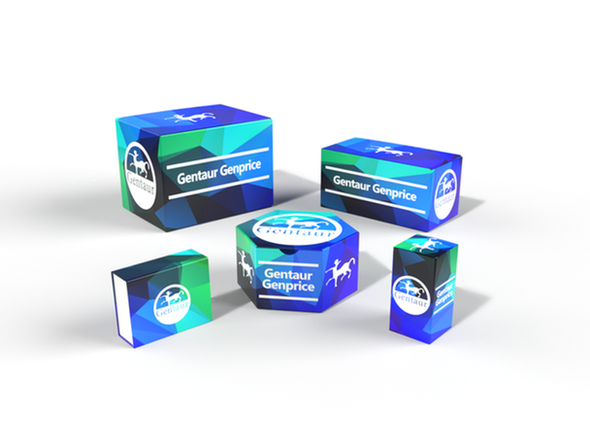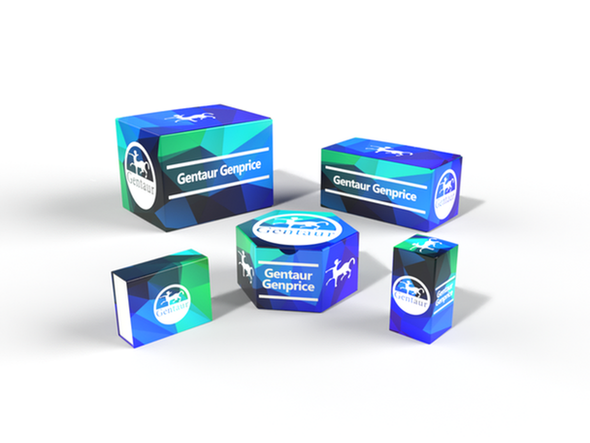749
Mouse Apolipoprotein A-IV (APOA4) ELISA Kit | KTE71411
- SKU:
- 749-KTE71411
- Availability:
- Usually ships in 5 working days
Description
Mouse Apolipoprotein A-IV (APOA4) ELISA Kit | KTE71411 | Gentaur UK, US & Europe Distribution
Application: This Mouse Apolipoprotein A-IV (APOA4) ELISA Kit employs a two-site sandwich ELISA to quantitate APOA4 in samples. An antibody specific for APOA4 has been pre-coated onto a microplate. Standards and samples are pipetted into the wells and anyAPOA4 present is bound by the immobilized antibody. After removing any unbound substances, a biotin-conjugated antibody specific for APOA4 is added to the wells. After washing, Streptavidin conjugated Horseradish Peroxidase (HRP) is added to the wells. Following a wash to remove any unbound avidin-enzyme reagent, a substrate solution is added to the wells and color develops in proportion to the amount of APOA4 bound in the initial step. The color development is stopped and the intensity of the color is measured.
Detection Method: Colorimetric
Conjugate: N/A
Sample Type: Cell culture supernatants#Serum#Plasma#Other biological fluids
Assay Type: Multiple steps standard sandwich ELISA assay with a working time of 3-5 hours. It depends on the experience of the operation person.
Kit Component: • Mouse Apolipoprotein A-IV microplate
• Mouse Apolipoprotein A-IV standard
• Mouse Apolipoprotein A-IV detect antibody
• Streptavidin-HRP
• Standard diluent
• Assay buffer
• HRP substrate
• Stop solution
• Wash buffer
• Plate covers
Features & Benefits: Mouse Apolipoprotein A-IV (APOA4) ELISA Kit has high sensitivity and excellent specificity for detection of Mouse APOA4. No significant cross-reactivity or interference between Mouse APOA4 and analogues was observed.
Calibration Range: Please inquire
Limit Of Detection: Please inquire
Usage Note: • Do not mix components from different kit lots or use reagents beyond the kit expiration date.
• Allow all reagents to warm to room temperature for at least 30 minutes before opening.
• Pre-rinse the pipet tip with reagent, use fresh pipet tips for each sample, standard and reagent to avoid contamination.
• Unused wells must be kept desiccated at 4 °C in the sealed bag provided.
• Mix Thoroughly is very important for the result. It is recommended using low frequency oscillator or slight hand shaking every 10 minutes.
• It is recommended that all samples and standards be assayed in duplicate or triplicate.
Storage Instruction: The unopened kit should be stored at 2 - 8°C. After opening, please store refer to protocols.
Shipping: Gel pack with blue ice.
Precaution The product listed herein is for research use only and is not intended for use in human or clinical diagnosis. Suggested applications of our products are not recommendations to use our products in violation of any patent or as a license. We cannot be responsible for patent infringements or other violations that may occur with the use of this product.
Background: APOA4 resides on chromosome 11 in close linkage to APOA1 and APOC3. APOA4 contains 3 exons separated by two introns, and is polymorphic, although most of the reported sequence polymorphisms occur in exon 3. The best validated and studied non-synonymous SNPs are a glutamine=> histidine substitution at codon 380 and a threonine=> serine substitution at codon 367; a sequence polymorphism has also been identified in the 3'UTR of the third exon. Intra-species comparative gene sequence analysis suggests that the APOA4 gene arose from APOA1 by gene duplication approximately 270 MYA.The primary translation product of the APOA4 gene is a 396-residue preprotein, which undergoes proteolytic processing to yield apo A-IV, a 376-reside mature O-linked glycoprotein.
Alternative Names: APOA4; MGC142154; MGC142156;
Search name: APOA4; MGC142154; MGC142156;
Tag: APOA4










